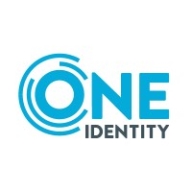

EmpowerID and One Identity Active Roles are competing products in the identity management sector. One Identity Active Roles appears to have the upper hand due to its comprehensive feature set that justifies its higher cost, despite customer satisfaction with EmpowerID's pricing and support.
Features: EmpowerID integrates well with other systems and provides robust workflow automation, allowing for streamlined processes. It also offers accessible automation services that benefit organizations in various ways. One Identity Active Roles has advanced access management features, enabling detailed and secure permission settings. It provides superior depth in access control and advanced functionalities essential for complex organizational needs.
Ease of Deployment and Customer Service: One Identity Active Roles has a straightforward deployment model and effective customer service that rapidly addresses user issues. EmpowerID offers flexible deployment with strong support but encounters setup complexity challenges. Although EmpowerID provides substantial support, One Identity Active Roles benefits from easier deployment and more responsive service.
Pricing and ROI: EmpowerID is favorable for its relatively lower initial setup costs, leading to faster perceived ROI. One Identity Active Roles requires a higher upfront investment yet is considered worthwhile due to its long-term operational efficiency and security enhancements. EmpowerID offers advantageous pricing, while One Identity Active Roles delivers more compelling returns through enhanced functionality.
| Product | Market Share (%) |
|---|---|
| One Identity Active Roles | 5.2% |
| EmpowerID | 1.8% |
| Other | 93.0% |


| Company Size | Count |
|---|---|
| Small Business | 7 |
| Midsize Enterprise | 2 |
| Large Enterprise | 17 |
One Identity Active Roles is a highly regarded solution for Active Directory (AD) security and account management. One Identity Active Roles will enhance group, account, and directory management while eradicating the need for manual processes. The end result is a significant increase in the overall speed, efficiency, and security of the organization.
Using One Identity Active Roles, users can:
Managing accounts in AD and Azure AD can be tremendously challenging; continually keeping these important systems safe and secure presents an even greater challenge. Traditional tools can be inefficient, error-prone, and very disjointed. In today’s robust marketplace, organizations are finding it somewhat difficult to keep pace with the constant access changes in a hybrid AD ecosystem. Additionally, there are significant security issues to consider (government compliance, employee status/access changes, and other confidential business requirements). And, of course, there is a requirement to properly manage Active Directory and Azure Active Directory access in addition to managing all the other numerous SaaS and non-Windows applications that organizations use today.
Users can easily automate all of these tedious, mundane administrative tasks, keeping their systems safe and error-free. Active Roles ensures users can perform their job responsibilities more effectively, more efficiently, and with minimal manual intervention. Active Roles was created with a flexible design, so organizations can easily scale to meet your organizational needs, today, tomorrow, and in the foreseeable future.
Reviews from Real Users
A PeerSpot user who is a Network Analyst at a government tells us, “It has eliminated admin tasks that were bogging down our IT department. Before we started using Active Roles, if one of our frontline staff members deleted a user or group, it could take several hours to try to reverse that mistake. Whereas now, the most our frontline staff can do is a deprovision, which just disables everything in the background, but it's still there. We can go in and have it back the way it was two minutes later. Instead of it taking two hours, it only takes two minutes.”
Becky P., Sr Business Analyst at George Washington University, shares, “In addition, with the use of workflows and the scheduled tasks, we were able to automate and centrally manage a number of the processes as well as utilize them to work around other product limitations. Those include, but are not limited to syncing larger groups, which have 50,000 plus members, to Azure AD. We sync up to Azure AD using ARS. If we had not already had ARS in place, it would have been impossible for us to have done so in the time period we did it in. We did it in under six months. ARS probably saves us at least two weeks out of every month. It's reduced our workload by 50 percent, easily.”
We monitor all User Provisioning Software reviews to prevent fraudulent reviews and keep review quality high. We do not post reviews by company employees or direct competitors. We validate each review for authenticity via cross-reference with LinkedIn, and personal follow-up with the reviewer when necessary.